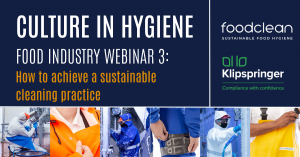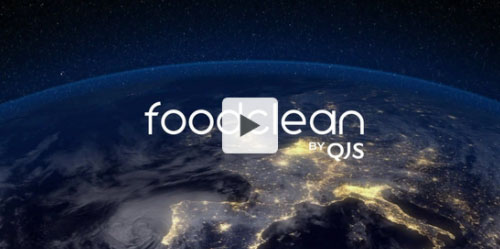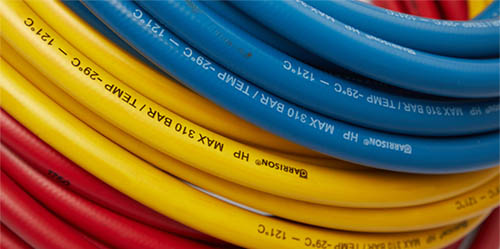Webinar 3 - Review
Sustainable Cleaning Practice
FoodClean’s Dan Turner is joined by Alex Carlyon, Director at Klipspringer, and Phil Kulkowski, Hygiene Consultant at Hygiene Improvement Solutions, to share thoughts and ideas regarding how food factories can maintain a sustainable cleaning practice.
The development and continuation of a sustainable cleaning practice must take into account multiple factors. Some of the top considerations are an efficient hygiene practice, transport and packaging, robotics and automation, and your company’s choice of equipment. Always remember that hygiene teams are the unsung heroes of the food industry and they can help you to incorporate sustainability into your daily activity. However, what does sustainability actually mean?
Sustainability in the Food Manufacturing Industry
Sustainability consists of fulfilling the needs of the current generations without compromising the needs of future generations, while ensuring a balance between economic growth, environmental care and social wellbeing. Think of it as the three Ps: profit, planet, and people, but what does that look like in the world of hygiene?
- People: People are our biggest overheads. Are we helping people become the best that they can through training and investment? Are we getting the best out of our people? Are we utilising people for the right tasks? Can we automate some of our repetitive tasks to reallocate people?
- Planet: Do we think about things like finite resources, or consider factors such as water wastage and energy consumption?
- Profit: We have to ensure that we remain profitable.
A business must look at all three Ps in order to be truly sustainable.
Efficient Hygiene Cleaning Practice
To start, FoodClean’s Dan Turner looked at identifying wasted labour utilisation that can be reduced or eliminated. If an operator is not actually cleaning, they’re engaging in waste in terms of time. If they’re having to carry chemicals to the point of use, that’s a form of labour waste. Adjusting equipment or trying to make equipment work – that’s waste too. When you recognise just how many ways there are for resources to be wasted, it’s time to ask a few questions around sustainable cleaning prcatices:
- Which cleaning tasks do not actually compromise ‘cleaning’?
- Where is energy being wasted or used inefficiently? Are you heating up water when cold water can be used, such as for first rinse or debris removal?
- Are you running electrical motors which are inefficient or when cleaning isn’t happening?
- Where the factory processes are generating heat, is there effective heat recovery to heat the water instead of a new energy source like gas or electricity?
- Can traditional chemicals start to be replaced with more sustainable products, such as plant-based cleaning agents?
- Are chemicals being utilised in the correct way so that every drop is being used as effectively as possible? For instance, are cleaning operatives using too high or too low a dosage?
We then have water waste, which is a major enemy to achieving sustainability in food manufacturing facilities. There are multiple ways to identify, reduce and eliminate the wasting of water, with key examples of water wastage being:
- Open-ended hoses.
- Using the wrong pressure for the job in hand.
- Having to rinse twice or more due to the ‘double cleaning’ effect.
- Using the wrong hose/gun/nozzle type for the system or job.
- Operatives adapting or abusing the water flow, such as drilling out nozzles.
- Bad utilisation of water flow, such as water missing the cleaning service.
- Using water to remove gross debris instead of cleaning it up properly.
- Filling vessels, cook pots or bins to soak instead of a direct cleaning approach.
Last but certainly not least, we have downtime. When thinking of sustainable cleaning practice, downtime is any time that a factory is not producing food. Here are a few ways to reduce it:
- Clean in a shortened time without compromise.
- Faster cleaning – right equipment in the right place at the right time.
- Quantity of food and business profitability – if cleaning was done 30 minutes faster per day, how much food could be produced in that window of saved time across a full year?
Transport and Packaging
For the next section, Alex Carlyon at Klipspringer discussed supply chain sustainability. A core aspect of this is your company’s focus on Environmental, Social & Corporate Guidance, or ESG. Specifically, what are your priorities?
“For example, think about things like chemicals being transported to site,” stated Alex. “Can they be transported in smaller drums? Water removal – is it sustainable? Empty containers – where are they being taken to? How far are they travelling?”
It’s also important to think about waste materials like single-use plastics, chemical volumes, and who decides what is and isn’t waste. Waste crime is another element, which is why your waste disposal programme needs to be robust. To determine how effective it currently is and how to improve it, a waste audit is required and you can then challenge the status quo.
“Protect your machinery and think about how long it takes to do this before cleaning. Is unused and unprotected equipment having to be recleaned and how much single-use plastic is being discarded in the process?”
Equipment Choice
Alex then moved onto the longevity of equipment. Ergonomic design is key here, as it involves the study of how equipment and furniture can be arranged so that people can carry out work and other activities more efficiently and comfortably. Here are some questions to ask yourself and your teams:
- Has the equipment been designed for the job in hand – is it safe to use?
- Are operatives suffering fatigue or injury from the equipment?
- Can operatives comfortably use the equipment for the duration of the task?
- Are operatives being adequately protected?
- Remember: right asset, right place, right time. Is equipment being stored large distances from the production area? Is cleaning equipment being stored in such a way that damages equipment or is it difficult to find and utilise?
- What happens when the equipment is finished with? Can it be renovated and repaired and put back to use? Can it be repurposed or recycled?
And of course, there’s your supply chain – are you buying equipment from suppliers who share your sustainability values and taking active steps to make improvements?
Examples of this could be Cleaning Instruction Cards (CIC), taking a visual approach to signage, or visual hygiene KPIs so that teams can instantly see status and performance.
Robotics and Automation
The final section of the webinar looked at robotics and automation, with some key insight from FoodClean’s Dan Turner.
“Whilst it’s highly unlikely that cleaning factory sites will ever become fully automated or robotic, there are some short-term quick wins,” Dan expressed. “Examples include putting a spray bar or a device on a conveyor belt and utilising the movement to clean it.”
When it comes to robotics and automation, there are multiple subtopics that can be considered regarding the optimisation of your food factory:
- Focus on repetitive, low-skilled and dangerous jobs first.
- Labour can be reallocated for other hygiene tasks, or better still, production.
- With robotics, think outside the box. Work together to develop it. The technology is out there, the application in hygiene practice is not.
- If you have a fixed piece of machinery that is in the same place every day and has a regular level of debris, this could be cleaned robotically.
- Robotics and automation do not mean a reduction in the human workforce – can we utilise our people elsewhere?
You can watch the full webinar via the link below.If you enjoyed this discussion and would like to find out more about how FoodClean can support your food manufacturing facility in terms of sustainable cleaning practice, we recommend visiting the newly launched FoodClean Experience Centre. To book a phone call, a video meeting or a personalised tour of the FEC, get in touch with our team at info@foodclean.com



